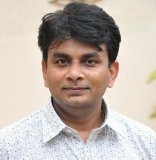Presidential Election: Thus spoke the Afghans
07 Apr, 2014 · 4378
D Suba Chandran analyses why the successful conclusion of the recently-held Afghan presidential election is a watershed moment in the country's history
Given the security and political environment (including the weather and rains) within and outside Afghanistan, the recently held election to usher in their next president is perhaps the most significant democratic poll in the history of the country. The nature and extent of participation given the level political polarisation and the threats of violence from the Taliban, this election should be nothing but a watershed in Afghanistan’s modern history.
Despite the multiple challenges ahead, this is an important milestone in the Afghan search for stability. The Afghans have spoken clearly. What does the vote signify, and what does it mean for the future of the country?
The size and the nature of the election were certainly historic and should set a benchmark for the future of any democratic means in Afghanistan. Despite complaints of fraud; the inability of the several voters to exercise their right due to weather (elections took place in cold and rainy weather); administrative issues (lack of adequate ballot sheets); and the Taliban’s threats to punish those who participate, this election is a definite success.
A comparison with the 2009 presidential elections will indicate how far Afghanistan has come in the past five years. From Karzai to Obama, credit should go to many leaders within and outside Afghanistan, in making this election a success.
The Independent Election Commission of Afghanistan: A Promising Start
Complete credit should go the Independent Election Commission of Afghanistan (IEC), for organising such an election. Without formal training in democratic traditions or much experience, organising such a large-scale election in over 400 districts located in varying topographies and security situations, and addressing 13 million voters, would not have been an easy task for anybody. But the IEC performed that wonder – using donkeys, trucks, air support and a newly trained Afghan National Security Forces (ANSF).
This is a good beginning for the process of elections. Unlike the rest of South Asia, where election commissions have seen various phases since the 1940s, Afghanistan’s IEC is totally new and has emerged out of nowhere. Any election commission would remain independent only if the political elite, and more importantly, the executive have the will; this is a good beginning for the IEC and a good omen for the future of democratic processes in Afghanistan.
The ANSF: Ready to Support Civilian Institutions
Credit should also go to the ANSF – the army and the police. Compared to the 2009 elections, where the ANSF contribution was minimal, security for the 2014 elections were ensured by the ANSF. There were 350,000 Afghan troops engaged in securing the election process, with hardly over 50,000 NATO troops. Providing statistical details of 2009 and 2014 elections may not do justice to the NATO troops then and the ANSF now; however, this should not take the credit away from the ANSF in supporting an elections process.
Historically the militaries in Afghanistan, the current one in particular, is not built to assist civilian institutions in securing an election. Given the mandate and the pace at which the ANSF was built, their achievements are substantial, if not extraordinary.
The IEC would not have succeeded in conducting this election without substantial support from the ANSF. Perhaps, this election should be seen as a coming of age for the ANSF and their preparedness to support the civilian government and its institutions.
The Afghan Civil Society: Leading the Democratic Transition
Third, the credit should also go to the Afghans, for cutting across the ethnic lines. True, they may have voted along ethnic lines, but they voted for a new Afghanistan. They came out in huge numbers; and according to initial reports, over 60 per cent of voters showed up on the day of polling, waited in long queues to ink their fingers and make a statement. And they did make a statement. Not so loud perhaps, but clear as crystal. The vote should not be interpreted as against someone – the Taliban or Karzai’s government – but as a positive vote for a new Afghanistan.
More importantly, the participation of women in the 2014 election was substantial. Multiple photographs and interviews of the women who have voted tell a new story of the Afghan women.
The Political Elite: Towards an Inclusive and Consensus Politics
Finally, the political elite of Afghanistan – though accused of corruption and war-lording – have also come a long way in deciding the outcome of this election. Consider the following: despite the fears of fraud, Karzai should be complimented for organising this election that was relatively free and fair. Though there were accusations of Karzai favouring Zalmai Rassoul and allowing the government machinery to support the latter, the other two leading contenders do share an optimism of the whole process so far.
The leading contestants – Ashraf Ghani, Abdullah Abdullah and Zalmai Rassoul also need to be complimented for ensuring inclusiveness in this election, and for addressing the concerns of every community, and not just the majority.
To conclude, the Afghans have spoken. Towards an Afghan-led Afghan-owned future. Loud and Clear.


